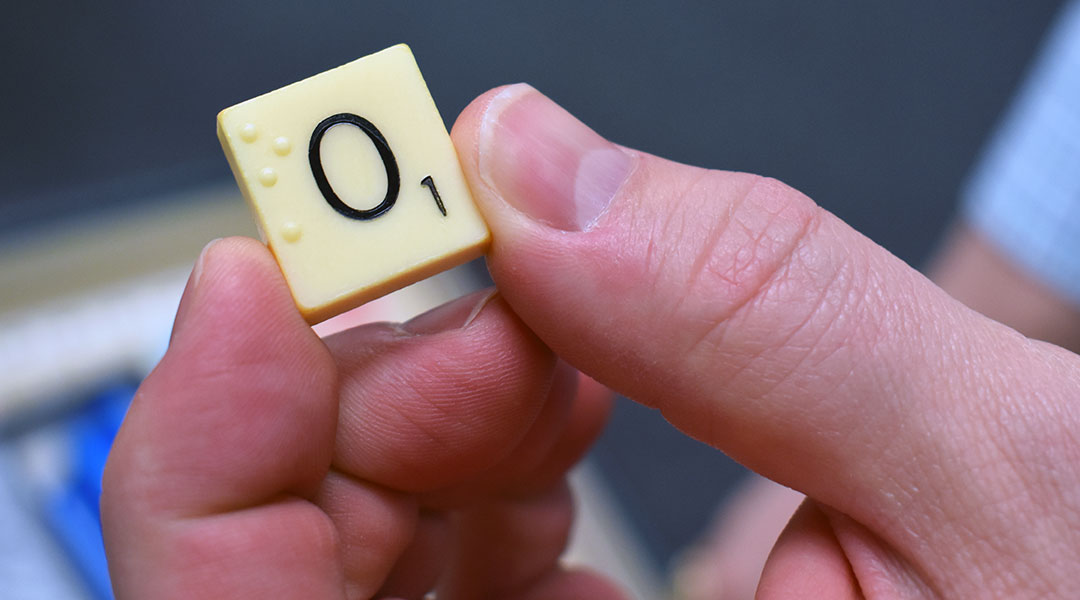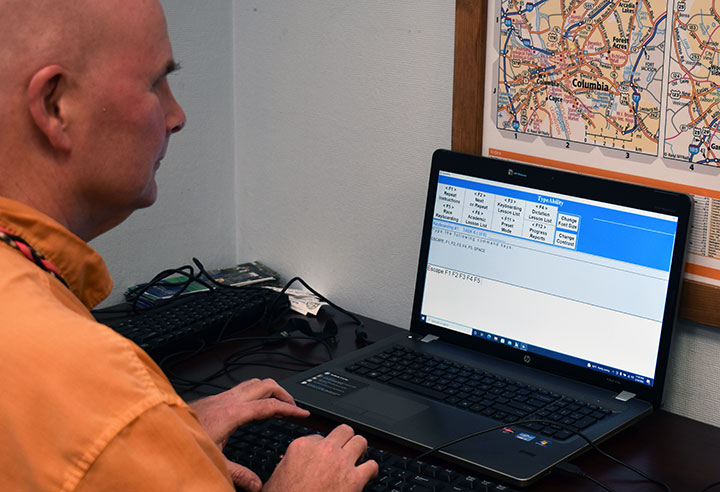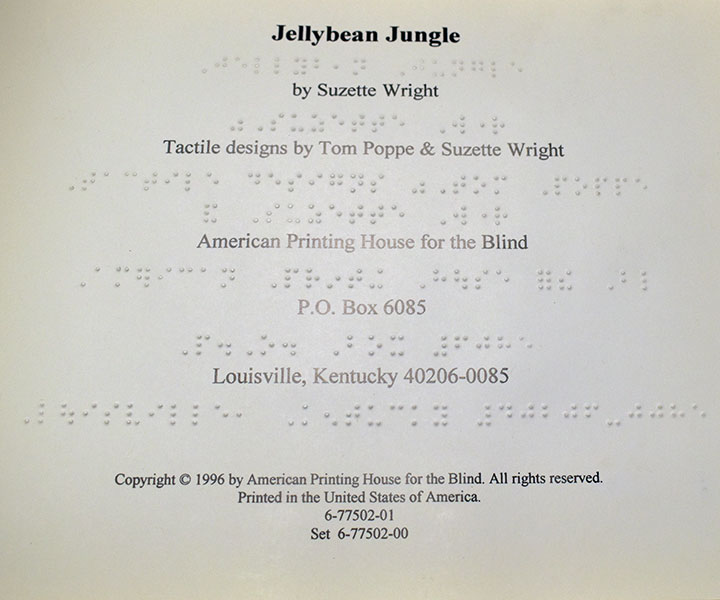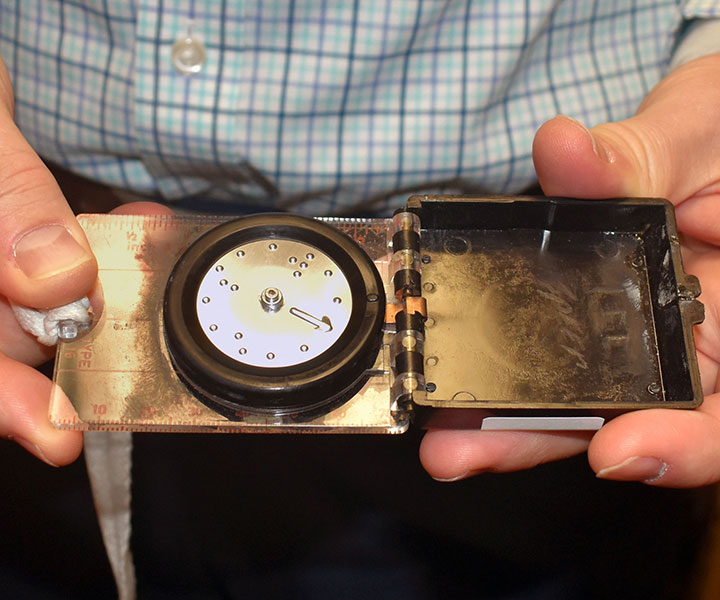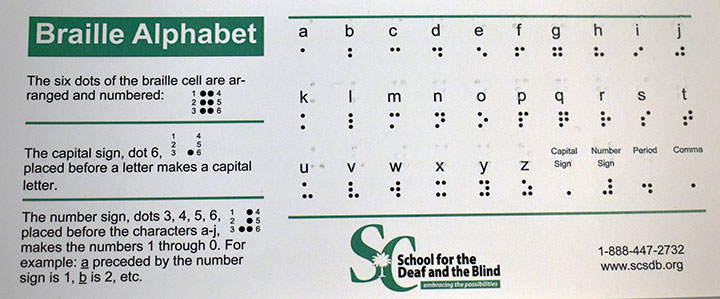Braille can be engraved on Scrabble game pieces to help someone who is blind or visually impaired play the game. Photos by Ashley Miller.
Clay Jeffcoat can see some light and dark objects, but one day he says he will be completely blind. Now, Jeffcoat is turning to new technologies that he said are changing his daily life.
Jeffcoat uses a computer program called JAWS, which stands for Job Access with Speech. The program helps blind or visually impaired users become more independent by using a speech synthesizer or braille to navigate their computers. Others are using smartphone applications like Be My Eyes and Aira that provide greater access to information and help with daily tasks.
“These technologies allow me to be more independent,” Jeffcoat, the business manager for the South Carolina School for the Deaf and the Blind outreach program, said. “I just need access so that I can do the same tasks that anyone else can do.”
JAWS requires an annual subscription that allows a person who is blind or visually impaired to use a keyboard to send emails, search the internet and make work life easier.
“It’s probably the most expensive screen reader, but it’s worth it,” Marty McKenzie, principal of SCSDB, who is also visually impaired, said.
Be My Eyes, created in Denmark, is a free mobile app that connects blind and low-vision people with sighted volunteers from around the world through live video chat. The app was founded in 2015 by Hans Jørgen Wilberg, who is visually impaired.
“It’s my hope that by helping each other as an online community, [this app] will make a big difference in the everyday lives of blind people all over the world,” Wilberg said at TEDxCopenhagen event in 2015.
Be My Eyes does not have trained professionals and relies on volunteers.
“It’s free, that’s the biggest thing right there, yeah cost,” Steve Cook, the assistive technology consultant at the South Carolina Commission for the Blind, who is totally blind, said.
Cook said The South Carolina Commission for the Blind gets federal funding to pay for technologies for students from elementary to college. That also includes paying for subscription services that will help the students become more independent in school and at home.
“Without assistive technology, I wouldn’t be able to do my job or navigate everyday life,” Cook said.
Aira is a pay-by-the-minute service that provides professional assistance with tasks like reading mail, online shopping, and navigating surroundings.
Sarah Massengale, a blind woman who is a community access specialist with Able South Carolina, prefers to use Aira for her work.
“I deal with a lot of confidential information and I need visual assistance with it sometimes,” Massengale said. “With Aira I know NDAs are signed and that they have HIPPA certifications, so I feel safer using Aira.”
Aira has its agents go through a number of confidentiality agreements.
“There is an added level of security there,” Sandra Marcus, the vice president of marketing at Aira, said.
Although these apps can be very helpful, sometimes a phone cannot do everything.
Braille is a touch reading and writing system for blind persons where raised dots represent letters of the alphabet. Invented by Louis Braille in 1824, braille is read by moving your hand across the raised dots.
By 1918, braille was known around the world as the official communication system for the blind or visually impaired people.
Today, less than 1% of the totally blind community use braille, but “as long as pens, pencils, paper and signage are around, braille will never go away,” Jeffcoat said.
When you take a regular children’s book written in text and put it into braille, it can become five to eight books in braille, depending on textile objects and words in the book.
McKenzie and Jeffcoat both say that accessible technologies are a must in their home and work life.
“Accessible technology gives people in the community opportunities to get information and go to work,” McKenzie said.
Steve Cook, the assistive technology consultant for the South Carolina Commission for the Blind, shows how people who are blind or visually impaired use assistive technology to navigate a keyboard.
Jellybean Jungle is a children’s book that has been written in text and in braille to make it more accessible to someone who is blind or visually impaired.
A braille compass is used by setting the direction and closing the compass. It locks in the direction allowing the person to feel the navigation.
A braille alphabet card shows how to learn braille.

